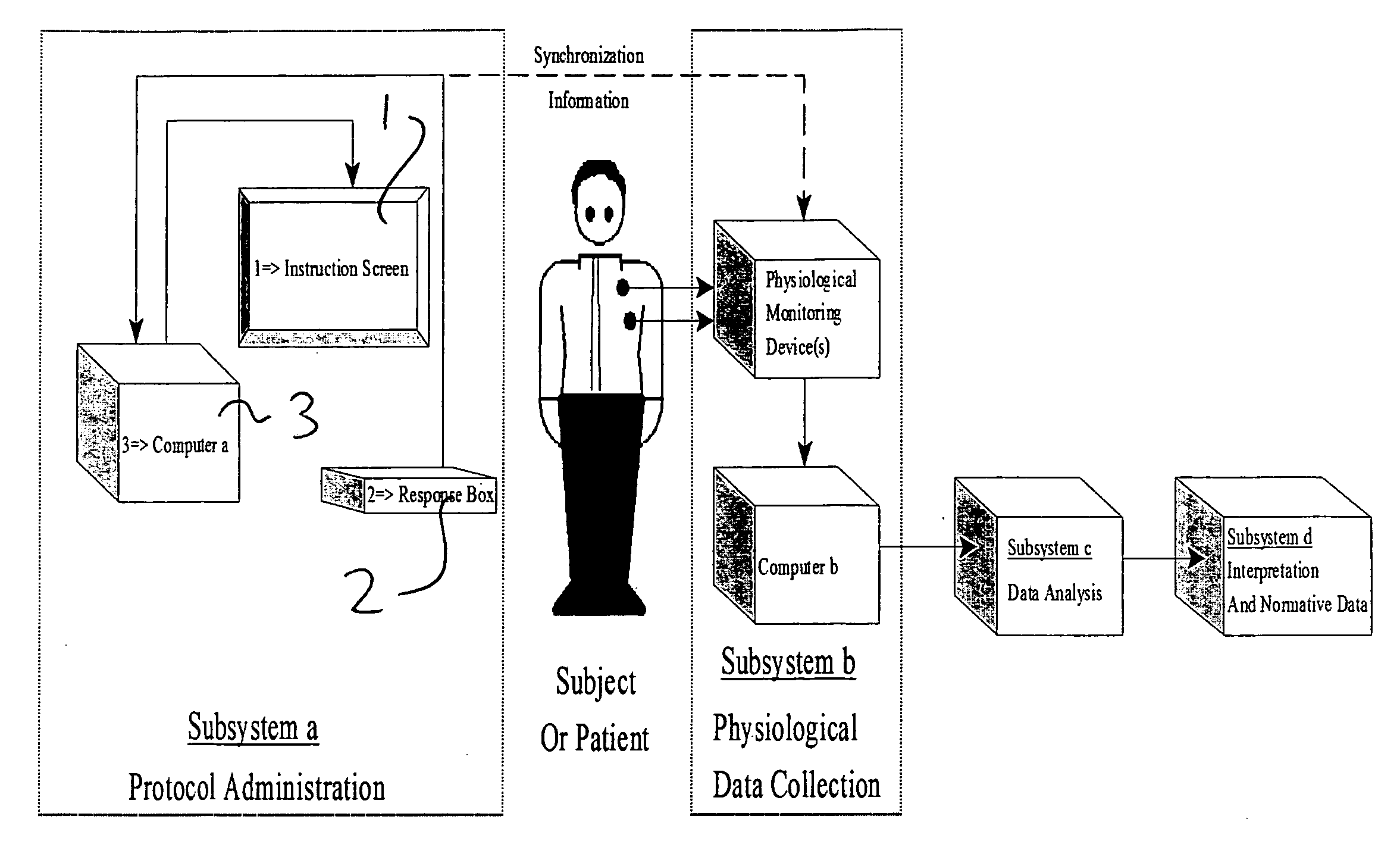Heart rate based bioassessment method and apparatus
a bioassessment method and heart rate technology, applied in the field of measuring and analyzing physiological data, can solve the problems of little recognition of the general utility of heart rate oscillation as a measure of sustained vasodilation and vasoconstriction, and the utility of analyzing heart rate variability under controlled conditions, so as to affect blood pressure and adversely affect their behavior
- Summary
- Abstract
- Description
- Claims
- Application Information
AI Technical Summary
Benefits of technology
Problems solved by technology
Method used
Image
Examples
example # 1
Example #1
Assessment of ADHD
[0066] This example illustrates how the system can be used as an assessment technique for ADHD. The protocol is designed to test how well the neurohormonal systems are activated when an individual attempts to pay attention for a prolonged period of time. All references to apparatus are to the apparatus illustrated in FIG. 1.
[0067] During the protocol, a computer A administers the instructions for the subject / patient. During a resting condition in which the subject / patient is instructed to not focus on any particular thoughts (i.e., to let their minds drift) for 6.5 minutes (first condition). The subject / patient sits quietly and watches an uninteresting stimulus on a computer screen during this first condition. Then in the second condition, the subject / patient performs a cognitive task which requires him or her to press a specific button depending on the stimulus that is presented on the screen (second condition). This task requires a) quickly processing...
example # 2
Example #2
Titration of Medication for ADHD
[0070] This example illustrates how the system can be used as an titration technique for medication of ADHD. The protocol is designed to test how medication activates a neurohormonal response or, in other words, how medication facilitates the body to make the appropriate physiological response necessary for paying attention.
[0071] According to the protocol, computer A administers five conditions:
[0072] a) 6.5 minutes of unfocused mental condition, with no medication;
[0073] b) 6.5 minutes of paying attention condition, with no medication;
[0074] c) patient takes medication and waits sufficient time (commonly 60 minutes) for the medication to take effect;
[0075] d) repeat of condition A (unfocused mental condition), but now with medication active in the bloodstream; and
[0076] e) repeat of condition B (focused mental condition) but now with medication active in the bloodstream.
[0077] Data analysis and interpretation again involves the ste...
example # 3
Example #3
Side Effects of Medications for ADHD
[0078] This example illustrates how the system can be used to assess side effects of medication for ADHD. The protocol is designed to test how medication activates the cardiovascular system and blood pressure. ADHD medications increase sympathetic nervous system (SNS) activity resulting in increased blood pressure and heart rate. For most patients, these effects are nominal changes that pose little or no health risks. However, some patients have adverse effects, such as clinically elevated blood pressure. Extremely high blood pressure elevations are potentially damaging because of the long term impact of high blood pressure on nearly all the organs in the body. This application may or may not involve LFB data.
[0079] Data analysis and data interpretation is the same as before but with the addition of measuring the blood pressure before and after administering medication; unlike conventional blood pressure measurement (which typically me...
PUM
 Login to View More
Login to View More Abstract
Description
Claims
Application Information
 Login to View More
Login to View More - R&D
- Intellectual Property
- Life Sciences
- Materials
- Tech Scout
- Unparalleled Data Quality
- Higher Quality Content
- 60% Fewer Hallucinations
Browse by: Latest US Patents, China's latest patents, Technical Efficacy Thesaurus, Application Domain, Technology Topic, Popular Technical Reports.
© 2025 PatSnap. All rights reserved.Legal|Privacy policy|Modern Slavery Act Transparency Statement|Sitemap|About US| Contact US: help@patsnap.com



